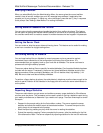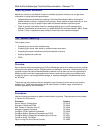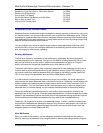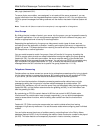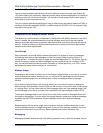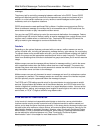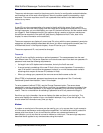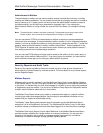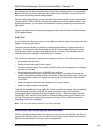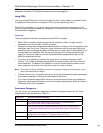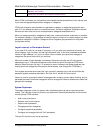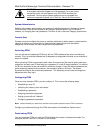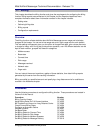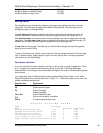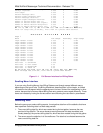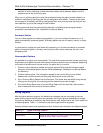
Mitel NuPoint Messenger Technical Documentation - Release 7.0
The Mailbox Data Report (in the Reports Menu) contains information on the number of recent bad
login attempts and the date of the last mailbox owner login, indicating “Never” for a new mailbox.
Because this report covers all mailboxes and contains a lot of information, you should first use
other reports to examine potential abuse problems.
With the mailbox search option, you can find mailboxes that meet certain criteria, such as those
having a specific FCOS or GCOS, or those with no passcode or with the tutorial enabled. If you
suspect server abuse, you can identify the mailboxes involved by performing a search with the
right criteria.
You can track high levels of incoming and outgoing mailbox traffic with the Call Detail Recorder
(CDR) optional feature.
Audit Trail
If you are the Server Superuser (root), you can obtain an audit trail report of all persons who have
logged in during any given period.
The server records activities you perform at a maintenance console in a log that becomes an
audit trail. The information recorded includes the user ID, time and date of activity, the menus
reached, actions taken, and some other details that you can specify. This information can be
used after the fact to investigate unauthorized use or “hackers.”
Only the server superuser can configure and manage an audit trail. The audit trail options are:
• Start and stop the audit trail.
• Review the audit trail and print it as a report.
• Format an audit trail report. Each activity recorded by the audit trail appears as a numbered
entry on a line by itself.
• Set the maximum entries, from 1 to 999,999, in an audit trail.
To calculate the actual number of Audit Trail Entries, which is a multiple of 63, check the
value for the Maximum Number of Audit Trail Entries. Divide that number by 63, round up to
the nearest whole number, and multiply the result by 63 to find the actual number of Audit
Trail Entries.
• Specify the types of information that comprise an entry (entry details).
• Specify a range of entries to be reported.
The audit trail resembles the server logfile, but it does not need to be cleared. When a specified
maximum number of entries is reached, the server continues to record new information,
overwriting the oldest information and beginning again at entry 1. When the number of entries
reaches 85%, 90%, and 95% of the maximum, the server writes a warning to that effect in the
error log. This gives you an opportunity to stop the audit trail, print it, or allow it to continue if
overwriting of entries is unimportant.
Note: You can use the audit trail whether or not FPSA is activated.
Functionally Partitioned System Administration
FPSA is a standard software feature that requires you to enter your user identifier (user ID) and
password for verification before you can reach any of the server menus. Access to the menus is
based on the authorization level of your user ID and password.
©
Copyright 2002, Mitel Networks Corporation 142



